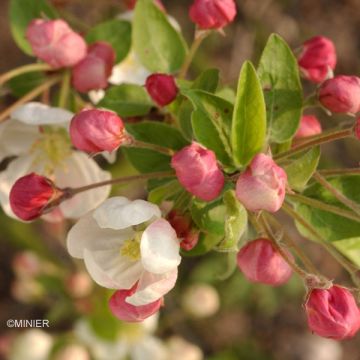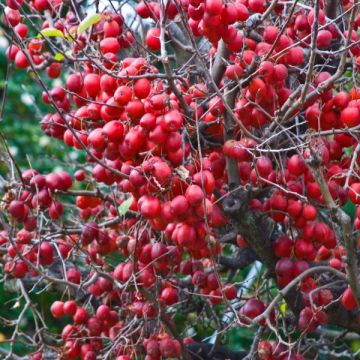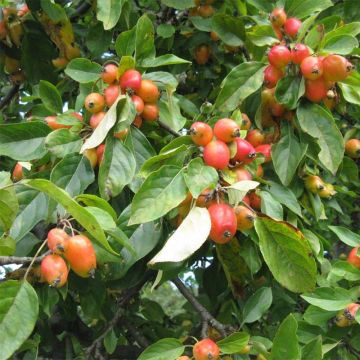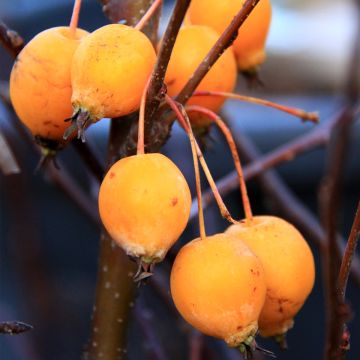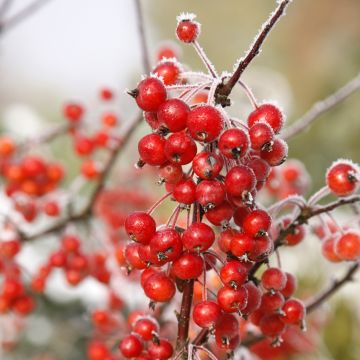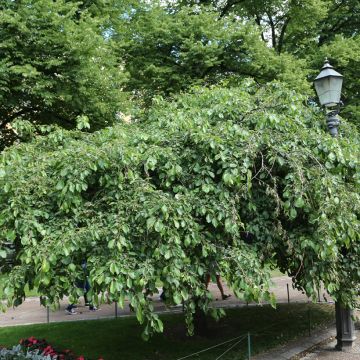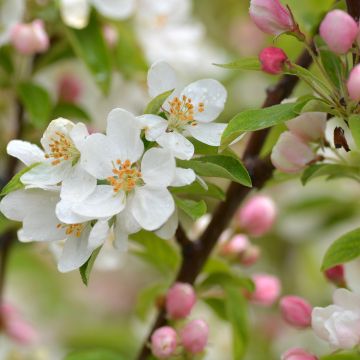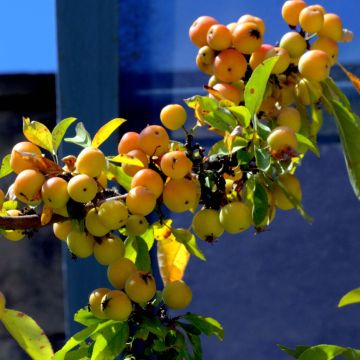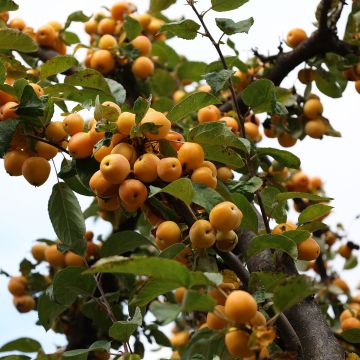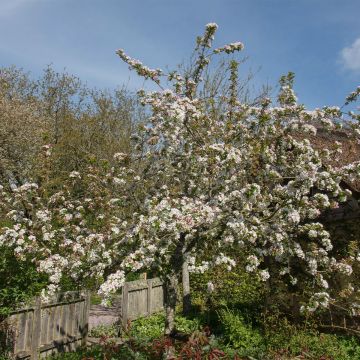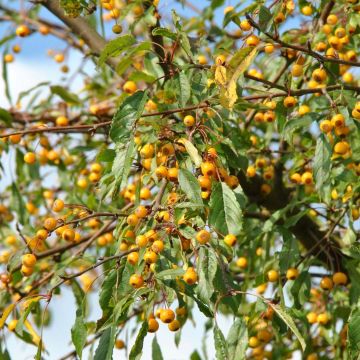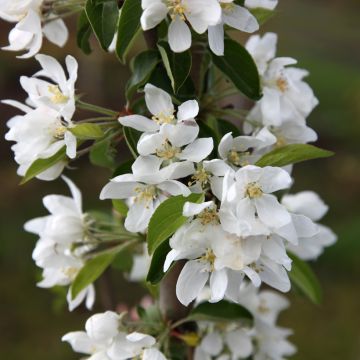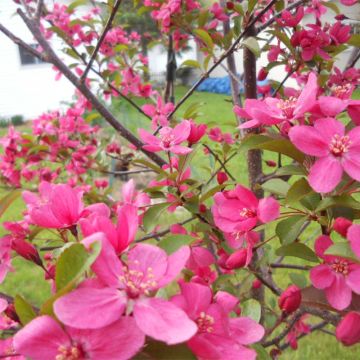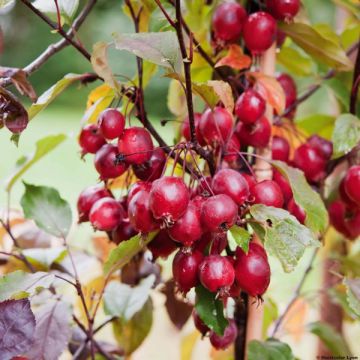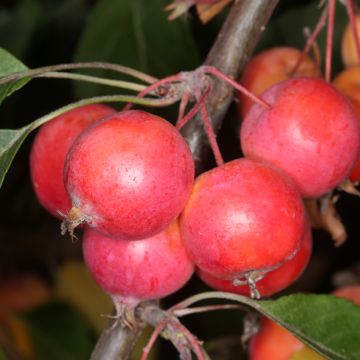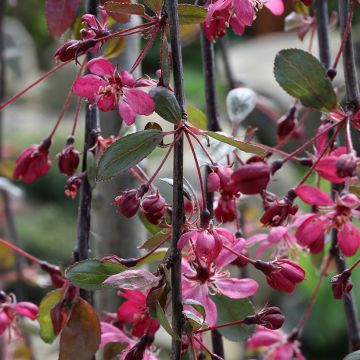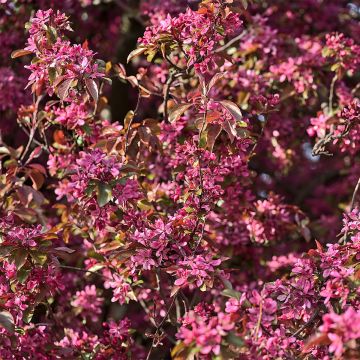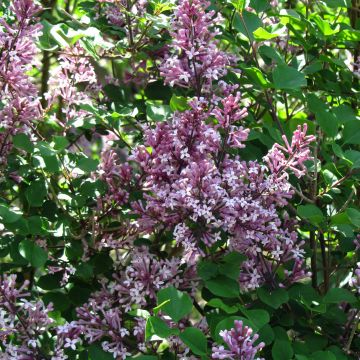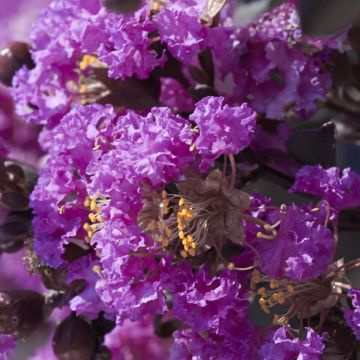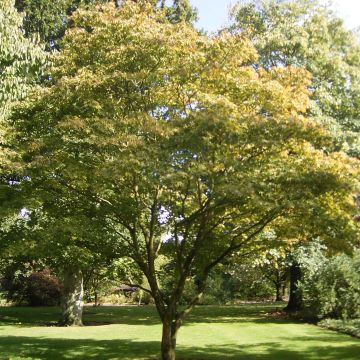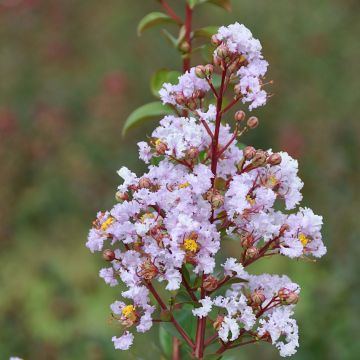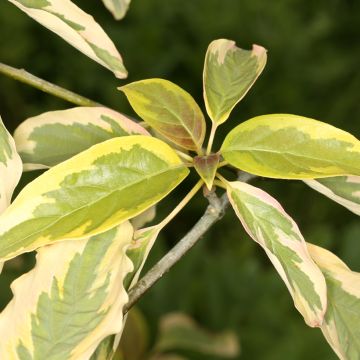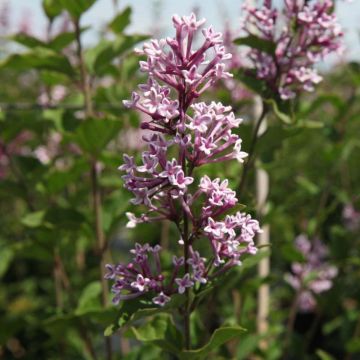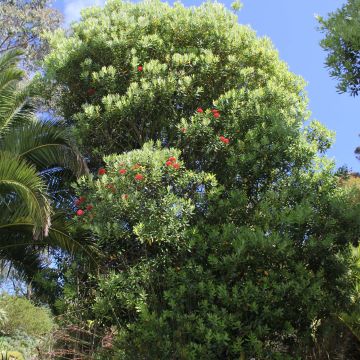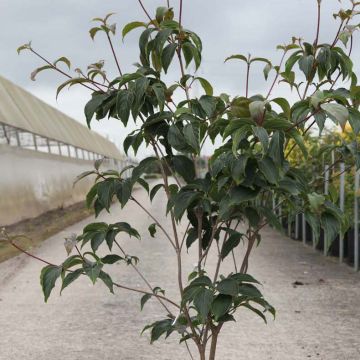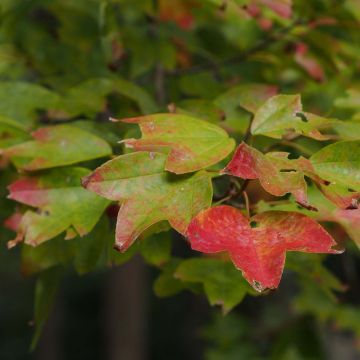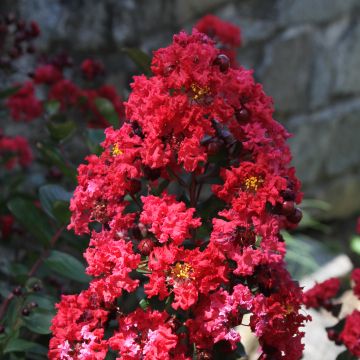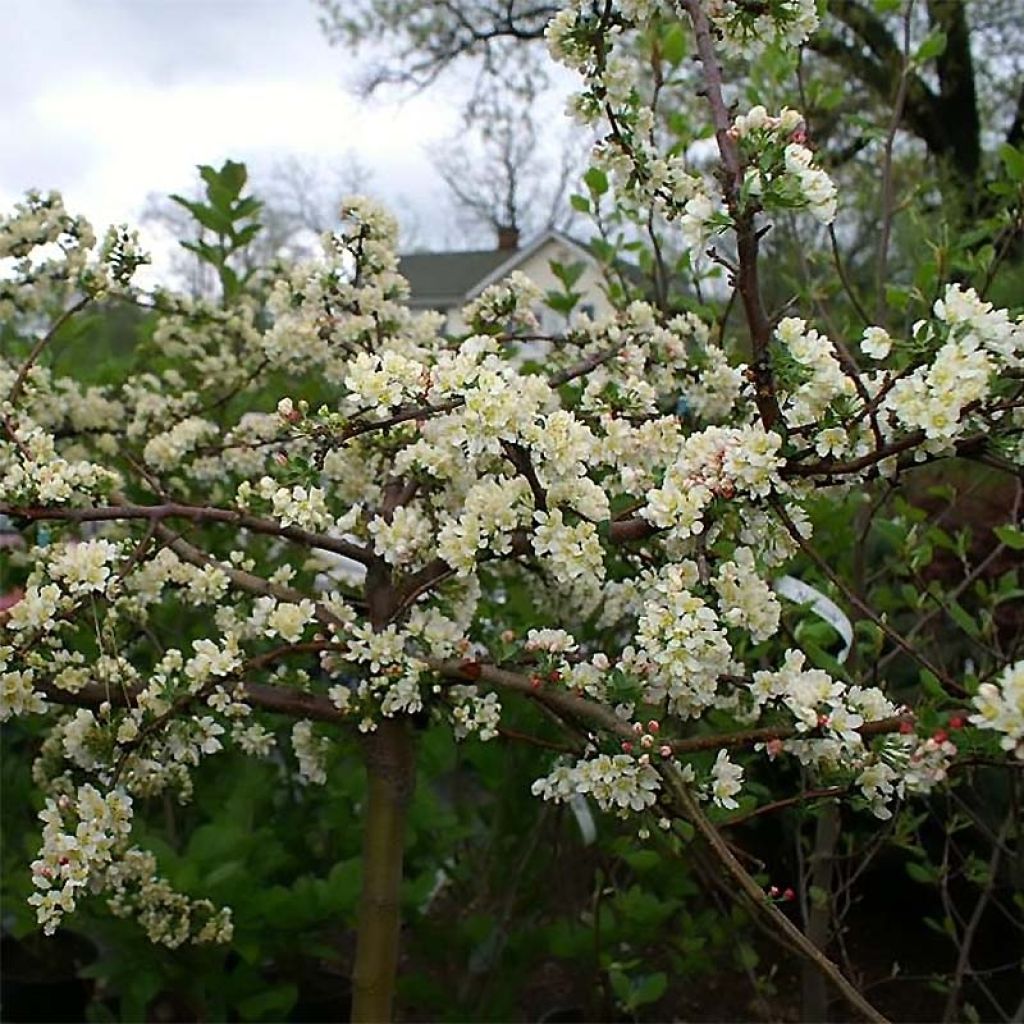

Malus toringo var. sargentii Tina - Crab Apple
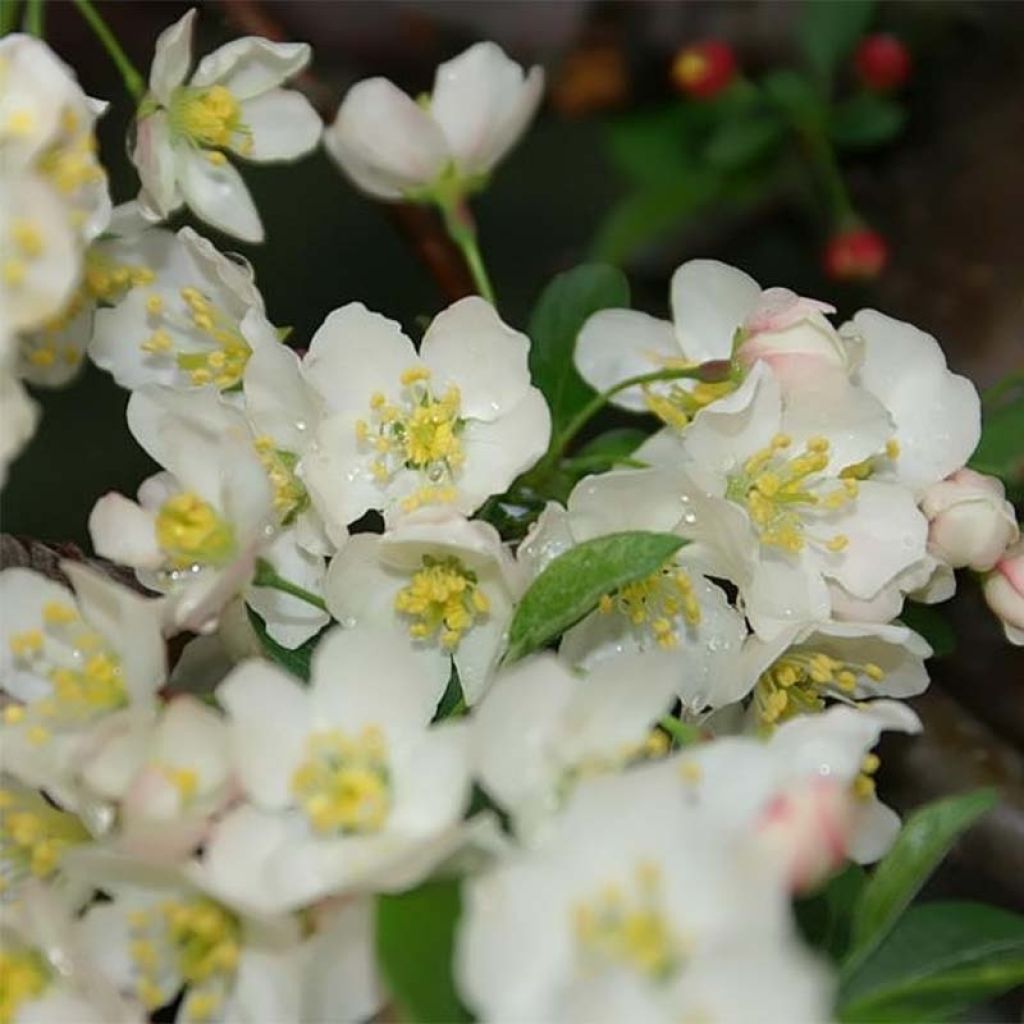

Malus toringo var. sargentii Tina - Crab Apple
Malus toringo var. sargentii Tina - Crab Apple
Malus toringo var. sargentii Tina
Sargent Crab Apple, Crab Apple. Apple Tree
Why not try an alternative variety in stock?
View all →This plant carries a 24 months recovery warranty
More information
We guarantee the quality of our plants for a full growing cycle, and will replace at our expense any plant that fails to recover under normal climatic and planting conditions.
From €5.90 for pickup delivery and €6.90 for home delivery
Express home delivery from €8.90.
Does this plant fit my garden?
Set up your Plantfit profile →
Description
Malus toringo 'Tina' is a very pretty dwarf variety derived from the Asian botanical species called Malus toringo or sieboldii var sargentii. This ornamental apple tree remains low, anchored on a short trunk, and develops a widely rounded crown that is covered in April-May with pink buds opening into snowy, white and fragrant flowers. Its foliage takes on beautiful golden hues in autumn, while its thousands of small cherry-like apples begin to shine bright red. With a little patience, it can be shaped like a giant bonsai, and its bare and dark silhouette in winter becomes curiously Japanese. This uncommon variety, resistant to diseases, undoubtedly deserves a prominent place in a small garden, in the centre of a flowerbed, or even in a large container on the patio.
Ornamental apple trees come from the various botanical species of the Malus genus belonging to the Rosaceae family. Hardy, accommodating, and easy to grow, flowering apple trees are content with ordinary soil but prefer loam which is deep, loose, and moist , as a sunny position. Once established, they are low maintenance and retaining their generous character. Numerous cultivars have emerged, both in Europe and in the United States, becoming increasingly attractive and resistant to diseases.
'Tina' is a descendant of Malus sieboldii var. sargentii, native to Korea and Japan. A large shrub or small tree, it develops knotty vegetation, one or more trunks topped with a wide and bushy crown, giving this apple tree a characteristic mushroom-like silhouette in a dense and somewhat irregular shape. It often grows wider than it does tall. Its average dimensions at maturity are about 2.50m (8ft) in height and 2.75m (9ft) in spread. It develops knotty wood covered with initially smooth, then rough, dark brown bark that flakes with age.
Flowering occurs in late April or early May, in the form of numerous pale pink buds. They open into single flowers with a diameter of 3.5 to 4 cm (1 to 2in), and pure white in colour. These flowers, gathered in small clusters, bloom simultaneously with the young leaves. Flowering is followed by the formation of a multitude of small apples resembling cherries, with a diameter of 1 cm (1in). At maturity in late summer, they are bright red and shiny. Highly appreciated by birds, these fruits remain attached to the shrub for half of the winter, until December. The deciduous foliage consists of ovate, alternate, and dentate leaves, dark green until the end of summer, turning golden yellow before falling. It is worth noting that this variety shows excellent resistance to apple tree diseases such as bacterial canker, rust, scab, and powdery mildew.
Malus Tina, like many flowering apple trees, is a good pollinator for early flowering fruit trees. This small tree with a slightly contorted silhouette has much more presence than most flowering cherry trees. Its abundant flowers may be less long-lasting than that of the cherry, but this is compensated by the beauty of its autumn foliage, the brilliance of its fruits, and the uniqueness of its habit. It will find its place in a medium to small-sized garden, ideally as a specimen when cleverly pruned to accentuate its flat-topped habit. Left to its own devices, its rounded mass blends into a flowered hedge, accompanied for example by large shrub or climbing roses trained as bushes, evergreen Viburnums, and lilacs. When space is available, ornamental apple trees planted in a large hedge on a slope create a rather enchanting scene not only in spring but also in autumn, thanks to their often sumptuous colours at the end of the season.
Report an error about the product description
Malus toringo var. sargentii Tina - Crab Apple in pictures
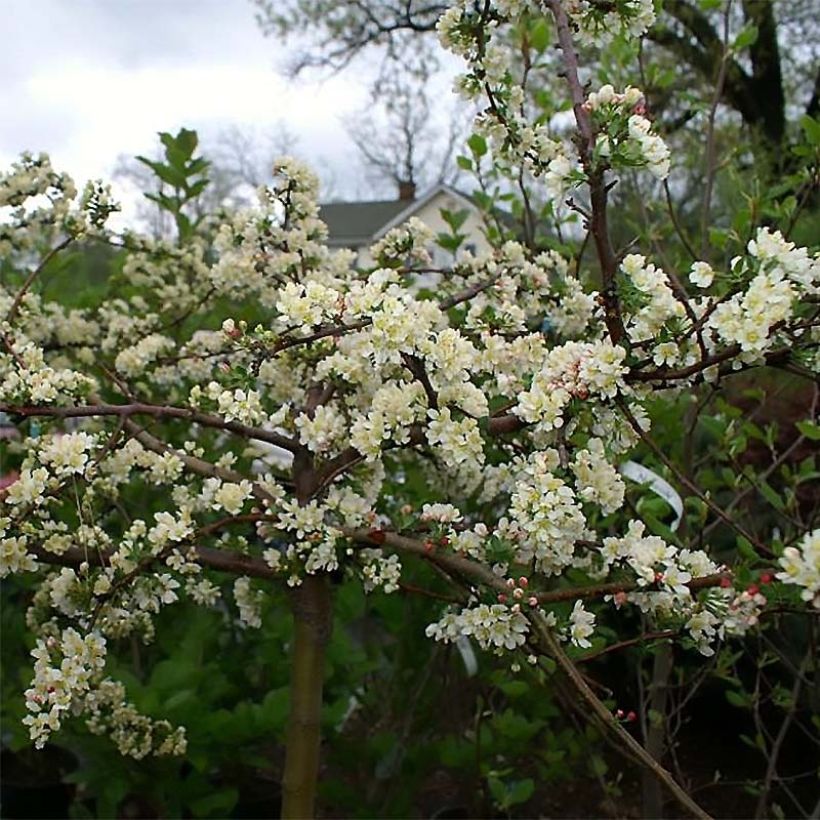

Plant habit
Flowering
Foliage
Botanical data
Malus
toringo var. sargentii
Tina
Sargent Crab Apple, Crab Apple. Apple Tree
Cultivar or hybrid
Other Malus - Crabapple
Planting and care
Easy to grow in ordinary but deep soil, Malus toringo Tina thrives in a sunny position. Ornamental Malus trees are generally very accommodating, but they prefer fertile, moist, and deep soil. After careful planting and initial regular watering for the first two years, they can manage on their own. Plant it in a sunny or semi-shaded spot in cool, rich, and well-drained soil, giving it enough space to spread. Dig a large planting hole. If the soil is poor, add compost to the planting soil and apply fertilizer or compost at its base every spring. Prune lightly to maintain a regular shape after flowering, avoiding cutting thick branches. Pruning is not always necessary.
Planting period
Intended location
Care
This item has not been reviewed yet - be the first to leave a review about it.
Trees for small gardens
Haven't found what you were looking for?
Hardiness is the lowest winter temperature a plant can endure without suffering serious damage or even dying. However, hardiness is affected by location (a sheltered area, such as a patio), protection (winter cover) and soil type (hardiness is improved by well-drained soil).

Photo Sharing Terms & Conditions
In order to encourage gardeners to interact and share their experiences, Promesse de fleurs offers various media enabling content to be uploaded onto its Site - in particular via the ‘Photo sharing’ module.
The User agrees to refrain from:
- Posting any content that is illegal, prejudicial, insulting, racist, inciteful to hatred, revisionist, contrary to public decency, that infringes on privacy or on the privacy rights of third parties, in particular the publicity rights of persons and goods, intellectual property rights, or the right to privacy.
- Submitting content on behalf of a third party;
- Impersonate the identity of a third party and/or publish any personal information about a third party;
In general, the User undertakes to refrain from any unethical behaviour.
All Content (in particular text, comments, files, images, photos, videos, creative works, etc.), which may be subject to property or intellectual property rights, image or other private rights, shall remain the property of the User, subject to the limited rights granted by the terms of the licence granted by Promesse de fleurs as stated below. Users are at liberty to publish or not to publish such Content on the Site, notably via the ‘Photo Sharing’ facility, and accept that this Content shall be made public and freely accessible, notably on the Internet.
Users further acknowledge, undertake to have ,and guarantee that they hold all necessary rights and permissions to publish such material on the Site, in particular with regard to the legislation in force pertaining to any privacy, property, intellectual property, image, or contractual rights, or rights of any other nature. By publishing such Content on the Site, Users acknowledge accepting full liability as publishers of the Content within the meaning of the law, and grant Promesse de fleurs, free of charge, an inclusive, worldwide licence for the said Content for the entire duration of its publication, including all reproduction, representation, up/downloading, displaying, performing, transmission, and storage rights.
Users also grant permission for their name to be linked to the Content and accept that this link may not always be made available.
By engaging in posting material, Users consent to their Content becoming automatically accessible on the Internet, in particular on other sites and/or blogs and/or web pages of the Promesse de fleurs site, including in particular social pages and the Promesse de fleurs catalogue.
Users may secure the removal of entrusted content free of charge by issuing a simple request via our contact form.
The flowering period indicated on our website applies to countries and regions located in USDA zone 8 (France, the United Kingdom, Ireland, the Netherlands, etc.)
It will vary according to where you live:
- In zones 9 to 10 (Italy, Spain, Greece, etc.), flowering will occur about 2 to 4 weeks earlier.
- In zones 6 to 7 (Germany, Poland, Slovenia, and lower mountainous regions), flowering will be delayed by 2 to 3 weeks.
- In zone 5 (Central Europe, Scandinavia), blooming will be delayed by 3 to 5 weeks.
In temperate climates, pruning of spring-flowering shrubs (forsythia, spireas, etc.) should be done just after flowering.
Pruning of summer-flowering shrubs (Indian Lilac, Perovskia, etc.) can be done in winter or spring.
In cold regions as well as with frost-sensitive plants, avoid pruning too early when severe frosts may still occur.
The planting period indicated on our website applies to countries and regions located in USDA zone 8 (France, United Kingdom, Ireland, Netherlands).
It will vary according to where you live:
- In Mediterranean zones (Marseille, Madrid, Milan, etc.), autumn and winter are the best planting periods.
- In continental zones (Strasbourg, Munich, Vienna, etc.), delay planting by 2 to 3 weeks in spring and bring it forward by 2 to 4 weeks in autumn.
- In mountainous regions (the Alps, Pyrenees, Carpathians, etc.), it is best to plant in late spring (May-June) or late summer (August-September).
The harvesting period indicated on our website applies to countries and regions in USDA zone 8 (France, England, Ireland, the Netherlands).
In colder areas (Scandinavia, Poland, Austria...) fruit and vegetable harvests are likely to be delayed by 3-4 weeks.
In warmer areas (Italy, Spain, Greece, etc.), harvesting will probably take place earlier, depending on weather conditions.
The sowing periods indicated on our website apply to countries and regions within USDA Zone 8 (France, UK, Ireland, Netherlands).
In colder areas (Scandinavia, Poland, Austria...), delay any outdoor sowing by 3-4 weeks, or sow under glass.
In warmer climes (Italy, Spain, Greece, etc.), bring outdoor sowing forward by a few weeks.

































